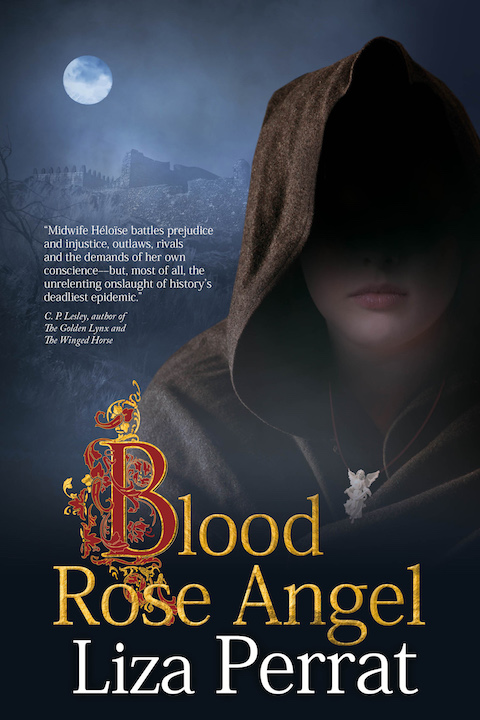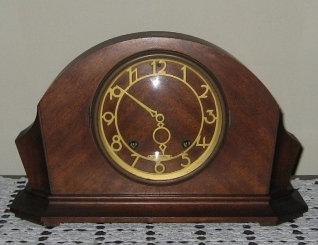![]() Can you recall reading a book recently that transported you, as if into a sensory painting — a place where you could taste the food, hear the sounds, smell the aromas (or stenches!), feel the textures, and perceive the deep or subtle emotions in the air?
Can you recall reading a book recently that transported you, as if into a sensory painting — a place where you could taste the food, hear the sounds, smell the aromas (or stenches!), feel the textures, and perceive the deep or subtle emotions in the air?
When the storytelling is that fine, we cannot help but “slip into” the story, beyond its physical words.
Recently, my writing group explored the topic of Sensory Storytelling. The meeting agenda delved into questions like: What is it? What does it look like, sound like? When is it truly artful? And of course…how can we increase the sensory depth and quality of our own writing?
That meeting design and discussion form the basis of this online class. You can work through the class material on your own, with a partner, or with your writing group. Expect a time commitment of 2-4 hours. If working with others, complete Steps 1 and 2 below in advance.
Here’s a preview of the class, with estimated minutes per Step. Detailed instructions follow.
Step 1: READ the two short articles about this topic. (30)
Step 2: EXAMINE 3 excerpted pages of a novel brimming with sensory prose. (30-60)
Step 3: SELECT and prepare to “SENSORIZE” a half page of your own writing. (30-60)
Step 4: IDENTIFY the SENSORY WRITING STRATEGIES you will apply more. (30)
If you are ready to try this class, read through these detailed instructions before you begin. This will help you decide whether you want to attend by yourself or collaborate with others.
Triskele Books is featuring a shorter version of this class, available at this link. Triskele is an Authors Collective, a fascinating publishing alternative to traditional or self publishing models. Do take a look!
SENSORY STORYTELLING — Online Class
STEP 1: Read about the topic. (30 minutes)
First, read these two articles and highlight or note the 5-10 ideas you might want to bring with more discipline to your writing.
STEP 2: Analyze excerpts from a highly sensory novel. (30-60 minutes)
Read and discover the sensory language in the provided excerpt from:
 Start of Chapter XII, Blood Rose Angel by Liza Perrat, a work of historical fiction.
Start of Chapter XII, Blood Rose Angel by Liza Perrat, a work of historical fiction.
It is 14th century France. The Plague is about to strike…
In this 3-page excerpt, Raoul, the expert stonemason husband of Midwife Heloise, the protagonist, has just traveled home from a cathedral job in Italy with an apprentice (Crispin) and in the company of a street vendor (Merlin), who are now guests in their home (“cot”) for a few days. The relatives of Heloise mentioned are: Ava her deceased mother, Morgane the daughter, and Isa the aunt who assists Heloise with midwifing. The characters expect to attend an annual fair that day.
a. Please print the pages contained in the PDF below.
The file contains the 3 excerpted pages, a sample marked up first excerpt page, and the book summary from Goodreads.com if you wish to read a little more about the novel.
b. Read the 3 excerpted pages, without pausing to analyze anything.
c. Then, look over the marked up sample copy of the first excerpted page.
This is an example of what you will do next.
d. Go back through the novel’s 3 excerpted pages and begin your analysis.
1. Circle any word, phrase, or series of words that helped you to better Visualize, Hear, Smell, Taste, or Feel the setting, a character, the action, etc.
2. Next, code the items you circled with V, H, S, T, or F.
3. Then, tally how many you found of each type.
Your analysis of the first page may contain more or fewer sensory descriptions than the marked up sample page. Try to notate at least 15 per page.
e. After completing this analysis, use these questions as prompts, for yourself if working alone, or as discussion starters with your partner or members of your writing group. Following each, jot down any thoughts you want to remember.
1. Which concepts from the Readings in Step 1 do you use regularly? Which ones would improve your writing if you used them more?
2. Which examples from the readings in Step 1 really made an impression on you? Why?
3. How many total sensory examples did you circle in your analysis of the 3 excerpted pages from Blood Rose Angel? More than 100? More than 50?
4. Which sensory words or phrases did you feel were the most effective? Discuss why.
5. In your total of sensory words and phrases for the 3 pages, what proportion did you find of Visual, Hearing, Smell, Taste, or Feeling? What are your observations about that distribution?
6. If we were to review the next few pages in the novel, when the Midwife’s family and friends are actually at the Fair, do you think this proportion of sensory types would change? Why or why not?
7. Any other thoughts about the sensory words and phrases on the 3 excerpted pages?
Step 3: Collect insights for improving your own writing. (30-60 minutes)
a. Review the sample contained in PDF #2.

Note the improvement ideas I received during a writers group meeting on sensory storytelling.
I wrote this piece when I first started creative writing. The selection is from a Sunday afternoon visit by my cousins when we were young. I thought you might like to see this photo of the little car, taken in the early 1960s.
b. Select a small piece of your writing that you feel is bland. Revising for sensory depth would likely improve it.
It should contain mostly narrative; a little dialogue is okay. Do not improve it before you share it, if working with others.
Ensure plenty of white space below your selected writing segment and on the blank back side. Consider using 1.5 or 2.0 line spacing, as it is easier to read when time is limited.
c. Work with the short piece you selected and identify sensory storytelling opportunities, as follows:
If working alone, review your highlighted “goals” from the readings in Step 1, and insights you gained by analyzing the 3-page excerpt from Blood Rose Angel in Step 2. Now, try to apply some of those concepts and examples as you review your short piece. Generally, follow the question prompt sample in a. above, which exhibits the questions posed about my sample memoir piece found in PDF #2. Of course, questions appropriate to your piece may vary from the sample.
If working with a writing partner, exchange your selected pieces of writing. Keeping in mind the sample from a. above (the question prompts I received), read your partner’s excerpt and provide relevant question prompts that reflect sensory storytelling opportunities of the Visual, Hearing, Smell, Taste, and Feeling types. Of course, questions appropriate to your partner’s piece may vary from the sample.
If working with members of your writer’s group, conduct a brief brainstorming exercise.
Write your name in a top corner of the page, and then pass your page to the writer to your left. Set a time limit of 10 minutes. Carefully read the page you received. Then, notate (on the bottom half page or on the blank back side) any question prompts for Visual, Hearing, Smell, Taste, or Feeling opportunities the piece owner might consider, as in the sample of my writing you reviewed earlier. (TIP: Treat the prompt question you write down like a footnote. Number your questions and insert the same number in the reference spot in the piece.)
When the time expires, repeat the process again, by handing the piece you just reviewed to the person to your left. If time permits, repeat the process a third time.
Complete the exercise by returning the pages to their respective owners. If you have time, share a few of the sensory “opportunities” received.
Step 4: Debrief and Select Strategies (30 minutes)
a. Review and/or discuss the take-aways you have gained via the readings, 3-page excerpt analysis, and question prompts for your own piece of writing.
This will refresh your memory for the final instructions in b. and c. below, which you will do by yourself.
b. Create cues that will remind you which sensory storytelling strategies you want to employ more in your own writing.
Review all the materials and notes you made as part of this class, and select 3-5 improvement strategies. Transfer them as brief cues onto a half sheet of paper or index card. Keep this list visible near you, while you write and revise.
 Here are a few examples (and merely examples!). Everyone’s reminders will be somewhat different.
Here are a few examples (and merely examples!). Everyone’s reminders will be somewhat different.
* Sounds?
* Nostalgic aromas?
* Textures?
* Quality vs. Quantity (best sensory word selected)?
* Sensory description reflecting the character’s level of experience?
c. Revise your selected writing piece segment.
Is there more sensory depth now? We hope so!
Congratulations. If you have worked through all four steps, you have completed this online class for improving your sensory storytelling.
I want to close with a personal note. A few days after my writing group completed this exercise, a writing group member and I were talking about what we learned from the meeting. She inquired if I had ever read The Red Tent, a novel by Anita Diamant, published in the late 1990s. I had not… So, she kindly lent me her copy. Oh… what an amazing reading experience! The Red Tent is a fine example of sensory storytelling in historical fiction. Anita Diamant was a journalist and author of nonfiction prior to writing this novel. She embeds her terse, yet rhythmic writing style with artful sensory descriptions.
We would love to hear comments about your experience with this online class… and whether you are applying selected strategies to your creating and revising processes. Also, if you want to share the name of an author/title of a novel, memoir, or biography which models fine sensory storytelling, would welcome that information in the comments about this class. If the comment period expires here at my blog, please go to the Contact page, where you can send me a note.
Bernice L. Rocque writes memoir and fiction based on her family’s history. Her first book, UNTIL the ROBIN WALKS on SNOW, was published in 2012, in the latter part of an eclectic career in the disciplines of librarianship, education, consulting, and project management. Her work in progress centers on the beloved bootlegging grandfather introduced in “Robin.” Click the links below to visit her at:

